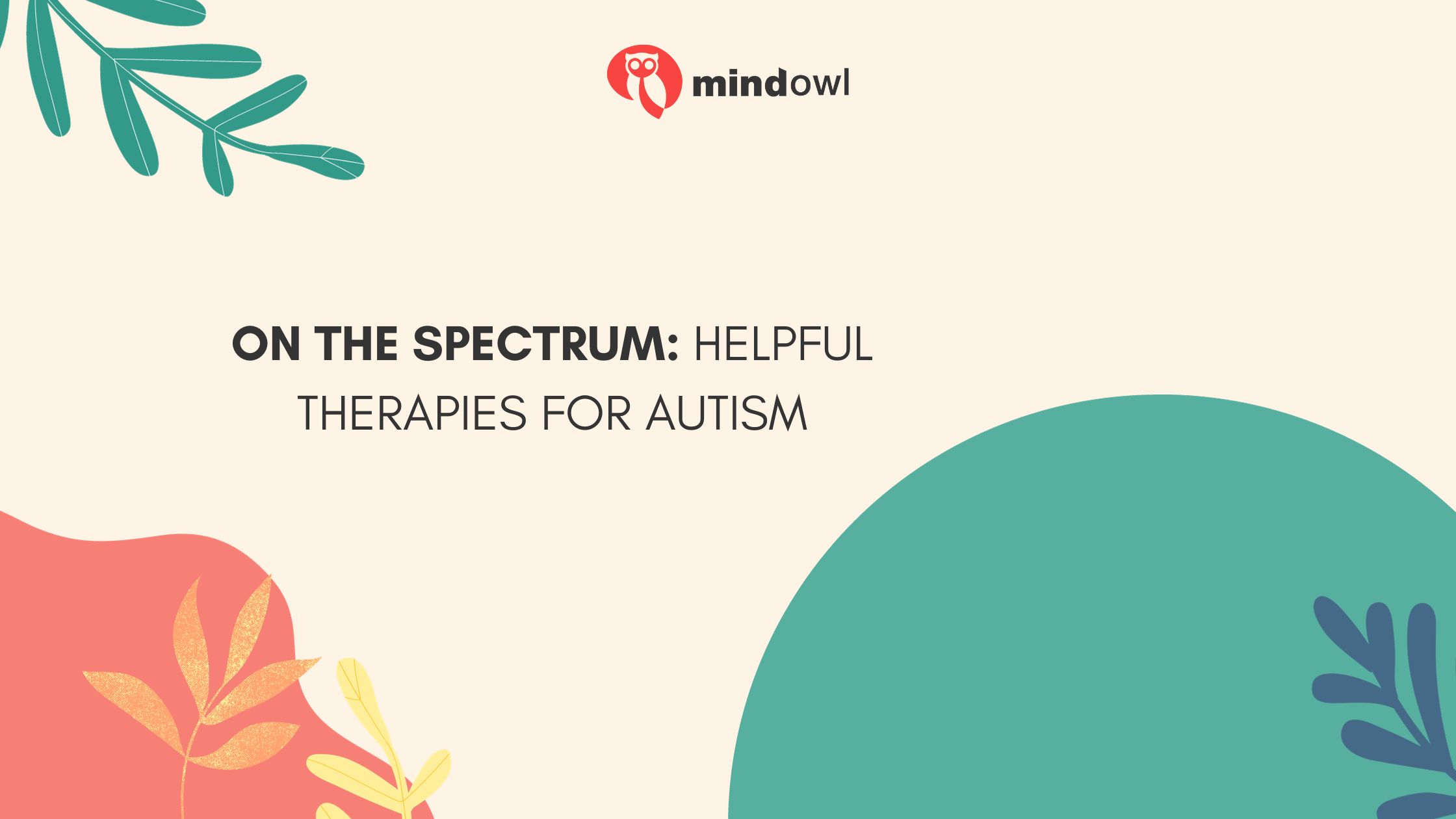Autism Spectrum Disorder (ASD) presents unique challenges that touch every aspect of life. For this reason, multiple therapeutic approaches are tailored to address specific needs and promote the well-being of people with autism.
From early intervention strategies to therapies addressing communication, behavior, and daily life skills, this comprehensive guide explores the diverse range of therapies available. Let’s have a look at some of the therapeutic options that offer hope and progress for individuals with ASD, empowering them to lead fulfilling lives.
Early Intervention
While it isn’t technically a form of ASD therapy, early intervention is essential in supporting children with autism. According to research, early diagnosis can allow for more effective therapeutic approaches and better management of the unique challenges that individuals with ASD may face in the latter stages of life.
In some cases, autism can be diagnosed as early as 18 months of age, although most diagnoses occur between the ages of 2 and 3. Detecting ASD this early in a child’s life gives the best possible chances for effective therapy, making early intervention all the more crucial.
According to the opinion in Neuropsychology Review, there have been cases where children on the spectrum were able to make so much progress that they stopped being on the spectrum altogether when they got older. Among other characteristics, like higher IQ and better motor and language skills, all these children had one more thing in common – they were diagnosed at a very young age.
Parent-Mediated Therapy
Parent-mediated therapy is not a standalone treatment for ASD, though it plays a pivotal role in supporting children with this condition. In it, the parents of children with autism practice therapeutic techniques they learned from professional therapists, to provide their child with consistent reinforcement and training.
This collaborative approach empowers parents to become active participants in their child’s therapy and potentially improve its progress. While researchers are still collecting data on the effectiveness of parent-mediated therapy, some studies suggest that it can improve the child’s communication and interaction skills.
There are several types of activities that parents can perform with their children with autism, including segments from joint attention, social communication, and behavioral therapy.
Joint Attention Therapy
Some individuals with ASD have difficulties with joint attention, which is the ability to share attention and communicate with others. For instance, individuals with autism often struggle to follow another person’s gaze or to focus on the direction indicated by a pointed finger.
Joint attention therapy is a structured and individualized approach that focuses on enhancing these skills through the use of visual cues, prompts, positive reinforcement, and other techniques that promote effective engagement in joint attention interactions.
When successful, joint attention therapy can lead to long-lasting improvements in eye coordination, pointing, showing, and overall social engagement.

Speech-Language Therapy
Speech-language therapy is a highly specialized and effective intervention for individuals with communication challenges, including those with ASD. It is designed to address a wide range of difficulties, such as speech articulation, language comprehension, and social communication skills, but also forms of non-verbal communication.
With speech-language therapy, individuals with autism can improve verbal skills like:
- Start calling people and things by their correct name
- Improve the way they are expressing their feelings and emotions
- Improve the way they are using words and structuring sentences
- Improve the rhythm and rate of their speech
Additionally, the therapy can also support people with autism by teaching them hand signals and picture symbols to communicate.
Some of the activities involved in speech-language therapy can even improve social skills and behaviors and facilitate better social interactions for people with ASD. For example, this therapy can help them learn what a comfortable distance when speaking to another person is, how to make eye contact, etc.
Occupational Therapy
Occupational therapy focuses on helping individuals engage in meaningful activities or “occupations” that are essential for daily life and well-being. As many individuals with ASD struggle with sensory processing, social interactions, communication, and daily life skills, occupational therapists can help address these challenges and promote independence.
Some of the actions an occupational therapist may take to support individuals with autism include:
- Help individuals find customized computer input devices for improved communication
- Provide coaching on personal care skills like dressing and eating independently
- Engage in activities that promote physical well-being and functional movement
By improving functional abilities and enhancing the quality of life, occupational therapy can empower individuals with ASD to lead more fulfilling and independent lives, and address their unique challenges and needs.
Physical Therapy
As difficulties with motor functions and movement are often prevalent, it is common for people with ASD to receive physical therapy as a component of their autism treatment. Professional therapists design personalized physical therapy programs to promote motor skill development, enhance muscle tone, and improve overall physical function.
For children, physical therapy can help in building muscle control, which can lead to better posture, increased strength, and improved balance. This, in turn, enhances the social aspect of the lives of children with autism, making it easier for them to engage in play with other children.
While there is no definitive evidence that physical therapy can substantially enhance the motor skills of individuals with ASD, many anecdotal reports and clinical observations suggest that it may have a positive impact.
Behavioral Management Therapy
Behavioral management therapy, often referred to as behavioral therapy, is a widely used approach in the field of psychology and mental health. It is a therapeutic method, based on Applied Behavior Analysis (ABA), and it focuses on identifying and modifying behaviors that may be problematic or harmful to an individual’s well-being or their interactions with others.
Behavioral therapy, or ABA in general, is often scrutinized for its potential to inadvertently suppress a child’s individuality and unique traits. However, the goal of behavioral therapy is not to change the child’s personality but to identify specific behaviors that may be challenging and provide strategies to address them effectively.
There are several types of approaches based on ABA therapy in Miami, including:
- Positive behavioral and support (PBS)
- Pivotal response training (PRT)
- Early intensive behavioral intervention (EIBI)
- Discrete trial teaching (DTT)
That being said, it is worth mentioning that there are also behavioral therapies, like cognitive behavior therapy, that are not based on ABA.
Cognitive Behavior Therapy
Cognitive Behavioral Therapy (CBT) is also a widely used approach for treating people with autism, but unlike behavior management therapy, it focuses on understanding and modifying the thoughts, emotions, and behaviors that contribute to psychological distress.
CBT operates on the premise that our thoughts and beliefs directly influence our feelings and actions. In essence, it recognizes the intricate connection between cognition (thinking), emotion, and behavior. The primary goal of CBT is to empower individuals with ASD to identify and change negative thought patterns and behaviors that contribute to their emotional difficulties.
Through a collaborative and structured process, individuals working with a CBT therapist learn to recognize irrational or unhelpful thoughts and replace them with more constructive and realistic ones. Research shows that CBT can help some people with autism recognize emotions better, but also deal with anxiety, and cope with social situations.
Medication Treatment
While no medication can cure ASD with all its symptoms, some medical treatments can help with specific symptoms or behaviors associated with autism. Medication is often prescribed to individuals who are at risk of self-harm, or exhibit other challenging behaviors like obsessive-compulsive tendencies, aggression, or hyperactivity.
By treating some of the more challenging symptoms with medication, people with autism can focus on other aspects of their therapy, such as learning new skills or participating in social interactions. Research shows that medication treatments are the most effective when combined with some type of behavioral therapy.
Some of the medication often prescribed to people with ASD includes:
- Selective serotonin re-uptake inhibitors (SSRIs)
- Tricyclics
- Psychoactive or anti-psychotic medications
- Stimulants
- Anti-anxiety medications
- Anticonvulsants
It’s important to emphasize that the use of any medication, including those mentioned above, should always be conducted under the guidance and supervision of qualified healthcare professionals.
Nutritional Therapy
Nutritional therapy recognizes that some individuals with autism may have unique dietary preferences, sensitivities, or nutritional deficiencies. Some children with autism don’t like how a specific food feels in their mouth, while others associate certain foods with stomach pain.
There are a variety of reasons for a child on the spectrum to be a picky eater and end up malnourished, or not receive the essential nutrients they need for healthy growth and development. For this reason, nutritional therapy can step in to address these challenges and create a tailored approach to meet the nutritional needs of individuals with autism.
Nutritional therapists work closely with individuals and their families to develop strategies that accommodate sensory sensitivities and preferences. Nutritional therapy may involve finding alternative foods with similar nutritional profiles or employing creative cooking methods to make foods more appealing.
The Bottom Line
Even though ASD therapies are constantly evolving, one thing remains constant – the unwavering dedication to enhancing the lives of individuals with autism. While there are multiple therapeutic approaches available, they all share the goal of improving people’s lives.
Recognizing that different individuals occupy different points on the spectrum, each person with ASD requires a personalized intervention to progress at their own pace. This is why it is paramount to seek guidance from qualified healthcare professionals when researching helpful therapies for autism.
MindOwl Founder – My own struggles in life have led me to this path of understanding the human condition. I graduated with a bachelor’s degree in philosophy before completing a master’s degree in psychology at Regent’s University London. I then completed a postgraduate diploma in philosophical counselling before being trained in ACT (Acceptance and commitment therapy).
I’ve spent the last eight years studying the encounter of meditative practices with modern psychology.

